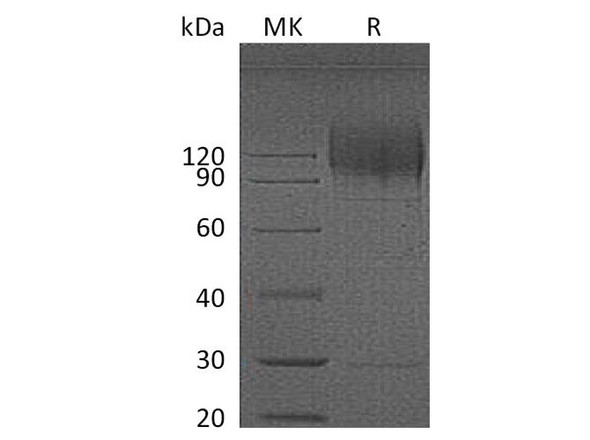HIV 1 gp120 Monoclonal Antibody (CPAB0713)
- SKU:
- CPAB0713
- Product Type:
- Antibody
- Antibody Type:
- Monoclonal Antibody
- Reactivity:
- Virus
- Applications:
- WB
- ELISA
Description
HIV 1 gp120 Monoclonal Antibody (CPAB0713)
The HIV-1 gp120 Antibody (CPAB0713) is a valuable tool for researchers studying HIV infection and the virus's interaction with host cells. This polyclonal antibody is highly specific to the gp120 protein of HIV-1 and is raised in rabbits for optimal reactivity in human samples. It is validated for use in various applications including Western blotting, immunofluorescence, and immunohistochemistry, allowing for detailed analysis of HIV-1 gp120 expression in different cell types.The gp120 protein is a key component of the HIV-1 envelope and plays a crucial role in viral entry into host cells. By targeting gp120, researchers can gain insights into the mechanisms of viral infection and potentially develop novel strategies for intervention.
This antibody enables accurate detection and quantification of gp120, making it an invaluable tool for HIV research and drug development efforts.With its specificity and reliability in detecting HIV-1 gp120, this antibody facilitates in-depth studies on viral pathogenesis, host-virus interactions, and potential therapeutic targets. Its use in research on HIV/AIDS can lead to advancements in understanding the virus and developing effective treatments and preventive measures.
| Product Name: | HIV 1 gp120 Antibody |
| Product Sku: | CPAB0713 |
| Size: | 100μl |
| Host Species: | |
| Immunogen: | Recombinant HIV-1 gp12 produced in baculovirus expression system. |
| Clone: | |
| Reactivity: | Viral |
| Applications: | Western Blot, ELISA |
| Purification Method: | |
| Isotype: | |
| Background: | Human immunodeficiency virus (HIV) is a retrovirus that can lead to a condition in which the immune system begins to fail, leading to opportunistic infections. HIV primarily infects vital cells in the human immune system such as helper T cells (specifically CD4+ T cells), macrophages and dendritic cells. HIV infection leads to low levels of CD4+ T cells through three main mechanisms: firstly, direct viral killing of infected cells; secondly, increased rates of apoptosis in infected cells; and thirdly, killing of infected CD4+ T cells by CD8 cytotoxic lymphocytes that recognize infected cells. When CD4+ T cell numbers decline below a critical level, cell-mediated immunity is lost, and the body becomes progressively more susceptible to opportunistic infections. HIV was classified as a member of the genus Lentivirus, part of the family of Retroviridae. Lentiviruses have many common morphologies and biological properties. Many species are infected by lentiviruses, which are characteristically responsible for long-duration illnesses with a long incubation period. Lentiviruses are transmitted as single-stranded, positive-sense, enveloped RNA viruses. |
| Synonyms: | HIV-1 gp120, HIV1gp120, HIV-I gp120, HIVIgp120. |
| Storage Buffer: |










